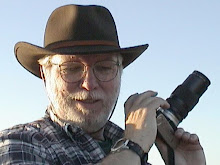Several potential collaborations were identified. It is important to recognize that this is not the end. Additional instruments are available and interested, and I believe that additional Moroccan researchers will also be interested in the future.
I propose that sometime in the late summer or early fall of 2010 we have a follow-up workshop to discuss additional collaborations and to confirm the tentative agreements reached at the Workshop.
During the meeting, I made a number of observations:
- There is considerable technical expertise in Morocco that can be usefully engaged in Space Research
- In addition, there is considerable interest in the Moroccan research community to develop international collaborations with scientists studying Space Weather Effects.
- Individuals from each university should consider themselves as representatives of their institutions to carry back information to their home institution.
- Training was a major concern that was raised repeatedly during the meeting.
- Information on a program to train African scientists at ICTP, Trieste, Italy was presented.
- Already, a need for an ISWI Space Weather School in Rabat taught in French was identified, and plans to hold the school will progress during the year.
- The ISWI UN Workshops as vehicles for training was discussed.
- Individual instrument special workshops for training were discussed.
- Perhaps a 1-2 week speaking tour could be sponsored to present talks on basic Space Weather research at all Moroccan Universities to provide a foundation for deeper scientific understanding.
- Data, instrument experience, and scientific expertise should be shared among related disciplines (geodesy, space physics, etc.) because similar instrumentation is required.
- The ISWI represents 14 instrument groups provided by scientists from 6 nations (see the Tables below), and data/numerical modeling of heliophysical phenomena. At this meeting 5 instruments from 3 countries were represented.
Summaries for individual instruments follow,
SCINDA (USA)- Many groups are interested in GPS receivers (nearly all research organizations).
- Contacts being explored for SCINDA include Profs Abderrahame Touzani and Driss Ouazar from Mohammed V University in Agdal, Rabat and Profs Abdelmajid Belafhal from Chouaib Doukkali University in El Jadida and Naja Jamal from Hassan 1er University in Settat.
- The goal is to install two GPS systems, one in Central Morocco and one in the south, perhaps in Dakhla near the equatorial anomaly.
- Installation is likely in 2010.
- Identify lead researcher(s) by March 2010 to participate in Kenya.
- If additional SCINDA instruments are desired to improve the usefulness for other applications like seismology, or plate techtonics they should be purchased by Morocco.
- Software is available free of charge.
- Training is available from several sources.
- Space Science school is planned for Rabat, coordinated by Christine Mazaudier and Nicole Villmer that will be taught in French. Collaboration with the UN Education Center in Rabat.
- ISWI Workshop in Luxor, Egypt November 6-10, 2010. Limited travel support available, usually 1-2 scientists/country.
- Special SCINDA Workshop in Kenya (July 2010).
- Several research groups expressed interest in hosting a RENOIR instrument.
- Location is CRITICAL for this instrument because dark and clear sky is needed.
- Jon Makela (Univ. Illinois) will prepare a document specifying site requirement.
- One imager is available for installation by summer 2010. Most promising site seems to be Marakesh.
- A site evaluation will be conducted during 2010.
- Existing instrument (fabry-perot for wind measurements) will remain in Brazil for several more years, if near term installation is desired an instrument would need to be purchased by Morocco. Instrument cost $100 K, no decision required until site survey is complete.
- Software is available free of charge, additional development is desired. Morocco may wish to participate in the software development.
- Contact information was exchanged.
- Four groups interested in possible installation of CALLISTO radio spectrometer.
- Christian Monstein (SWISS) to prepare instrument requirements document and provide it to interested groups by the beginning of Jan 2010.
- Radio QUIET site is required.
- Site selection will proceed in 2010.
- Maximum of 1-2 spectrometers make sense for CALLISTO.
- Experimenter is very pleased with expressions of interest.
- Tentative agreement to install 2 magnetometers.
- A MOU between Kyushu University the Moroccan university will be prepared.
- The number of graduate students from Kyushu University to help install the magnetometers is the limiting resource for installation in Morocco. Current commitments are for 10 other magnetometers for Africa, and 10 for Siberia. Details of installation schedule will be worked out in the next few months.
- Scientific materials will be exchanged by email.
- Software and training are an issue. Prof. Yumoto will seek to develop a student exchange program to train Moroccan students, and develop student-to-student collaborations.
- Five interested University groups.
- Skills required include EE, RF, Instrument Design, Signal processing, teacher training (secondary and elementary schools).
- The need for training was noted
- Sharja, UAE AWESOME Workshop in March 2010 will provide tutorials and hands-on experience.
- Similar training at the ISWI Workshop in Luxor, Egypt, November 2010.
- Limited travel support available for both workshops.
- Potential for student exchanges, one-week training trips (Shared cost? Maybe airfare paid by Morocco, local cost by Stanford University).
- Deborah Scherrer will provide existing tutorial and educational material to the interested groups by the end of December.
- Modeling is often critical for understanding the physical processes involved in heliophysics.
- Therefore modeling should be a part of the collaboration between Morocco and ISWI scientists.
- Many US groups have a modeling component. Many times the modeling guided by the data answers scientific questions.
- Eduardo Araujo (NOAA) volunteered to facilitate the contacts between Moroccan and US scientists.
















